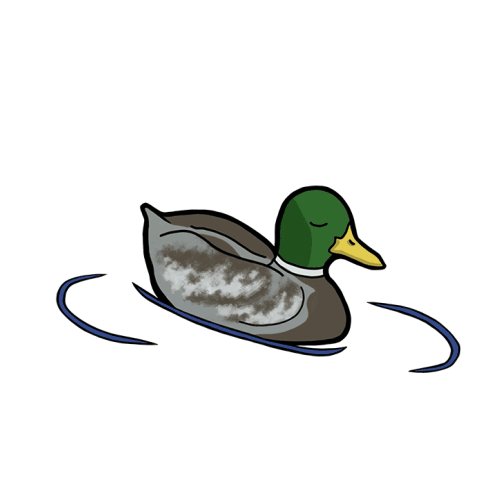
Deep within the nature at Willamette's Salem campus, the students of the Biodiversity and Climate Change class, taught by Professor David Craig, wait for opportunity to strike. They sit observing, silent, getting ready for the perfect shot to log into their iNaturalist profiles. The app iNaturalist is designed for scientists, biologists and anyone who loves observing critters to take photos of and record any organism they see. The app helps observers figure out what sort of animal they are looking at and allows scientists to use this data.
Rose Grimpson (‘27) explained that iNaturalist is an “online platform where scientists and just observers, biologists, anyone in the field community around the world can post observations.” After the picture has been taken, the app’s AI software will try to identify the organism, and if it can’t, people from the community can identify it as well. Grimpson continued, “Sometimes you’ll get a flag that says research grade because you’ve taken enough or good enough pictures of an animal that can be used for research.”
As a whole, the class has 18,280 observations and 361 species identified from the sunset-colored turkey tail mushroom to the adorable seals of the Oregon coast and the majestic red-tailed hawk.
Many of Grimpson's 93 observations came from her internship at the Grande Ronde Reservation, and her favorite is the rough-skinned newt. “They are actually one of the most poisonous newts ever!” she explained. “They hold enough poison to kill three adult horses in one sitting. The reason for that is because the garter snake is immune to their poison so they have to keep upping their poison dosage to play an arms race with the garter snake and keep evolving so that the snakes don’t kill them. They’re iconic to Oregon and I was so excited to see a couple, so they’re on my iNaturalist profile.” Other discoveries observed by Grimpson are witch’s butter, a sand dollar and many species of mushrooms.
Frequently found around the Mill Stream is Blue Kalmbach (‘27), waiting for the geese to make an appearance. “My personal project right now,” Kalmbach shared, “is hunting down the geese because there is a pair of geese right now that are nesting. I am kind of stalking the geese whenever I can, so my iNaturalist right now is just pictures of their movements around campus so I can catch where they nest.” Because their favorite color is blue, Kalmbach is also a fan of their observations of all the blue-colored birds on campus like the great blue heron and the scrub jay.
The iNaturalist craze has also led students like Teya Fukuhara (‘27) off-campus to do their observing on the Oregon coast. Fukuhara went tidepooling with their partner and enjoyed documenting the seals. “They were so cute!” Fukuhara said. “They flop around on the rocks; it’s really funny. We saw sea lions too. They were really loud.” Some of Fukuhara’s other favorite observations made on campus have been the great blue heron and the bees. Fukuhara’s iNaturalist goal is to log 250 animals by the end of the year.
Armed with his camera and a love of nature, Nate Rutter (‘24) dives outside to log observations for iNaturalist. He explained that many of his observations have been birds: “I’ve seen dark-eyed juncos, American robins, and various species of duck. There is this weird domesticated duck called a Myscovie duck which I saw. There is also the lesser goldfinch. I’ve also seen a lot of different fungi like shelf fungi, regular ground mushrooms, and turkey tail mushrooms.”
Rutter has also been “trying to get more images of hawks because they’re a lot harder to see and they usually perch much higher up in trees that are coniferous, so they’re usually covered by pine needles or protection.” He recently captured his first image of the red-tailed hawk in Colorado. “Just this last week, I was in Colorado touring for a Ph.D. program, and I was able to catch a red-tailed hawk. So it was the first time I had seen or at least captured a red-tailed hawk on camera. I only got it as it started to soar off, so I got it with its wings extended. It was beautiful.”
Rutter reflected on the benefits of iNaturalist and the Biodiversity and Climate Change class: “I’m always surprised at how many different species there are around us that we don’t notice or we don't always pay attention to on a daily basis. I think that the purpose of this class is to force people to stop and take a look at the things we would normally pass up, and it’s great that we live on a campus that’s so biologically diverse because there are other places that don’t have that.”

If you want to see bald eagles in Oregon, Klamath basin has the largest wintering concentration of Bald Eagles. The largest Bald Eagles other than Alaska. We also have the most top five birds in the area, including American White Pelicans, Grebes, Sandhill Cranes, Snow Geese, Great Blue Herons, Peregrine Falcons, American Kestrels, White-headed woodpeckers, Northern Pigmy Owls, and Great Gray Owl to name a few birds that are plentiful in this Basin.